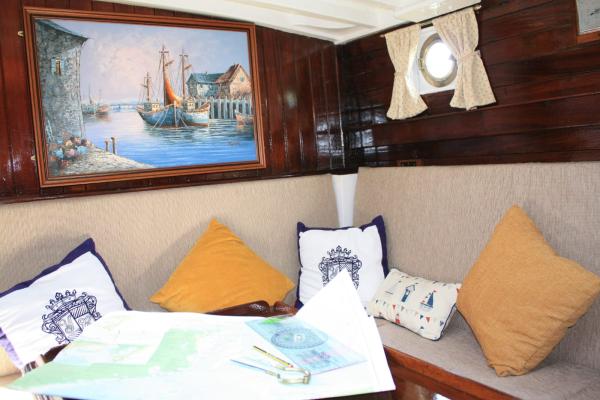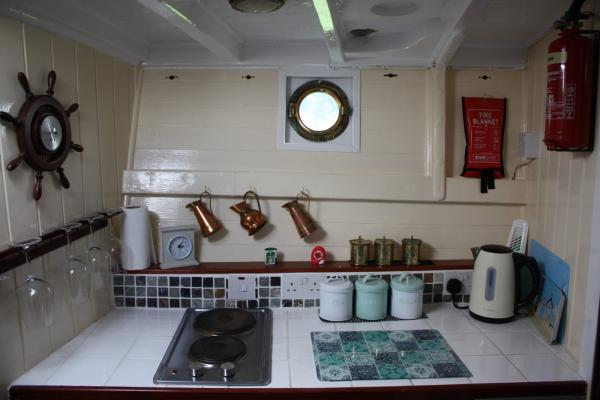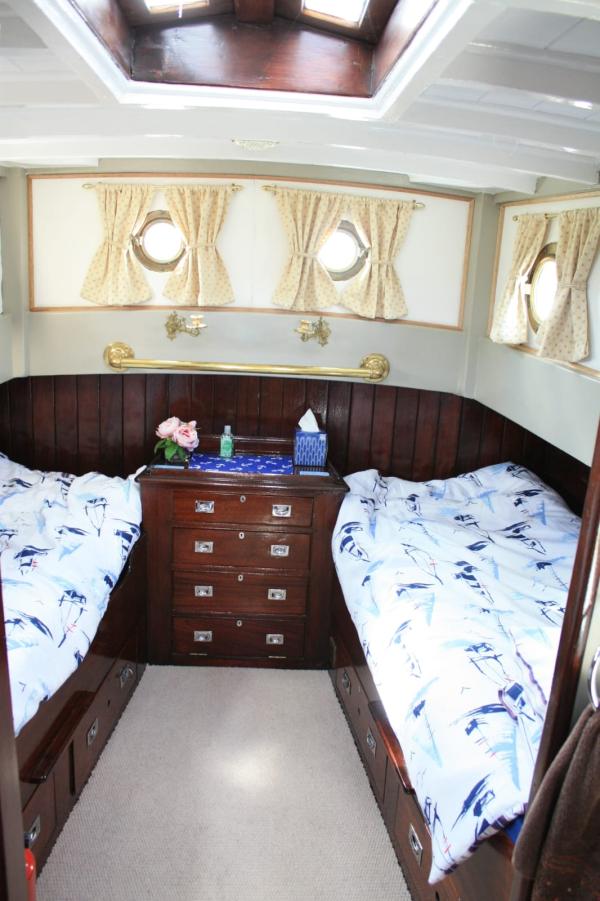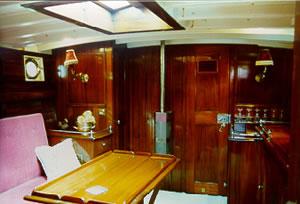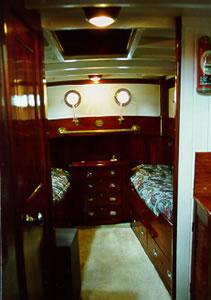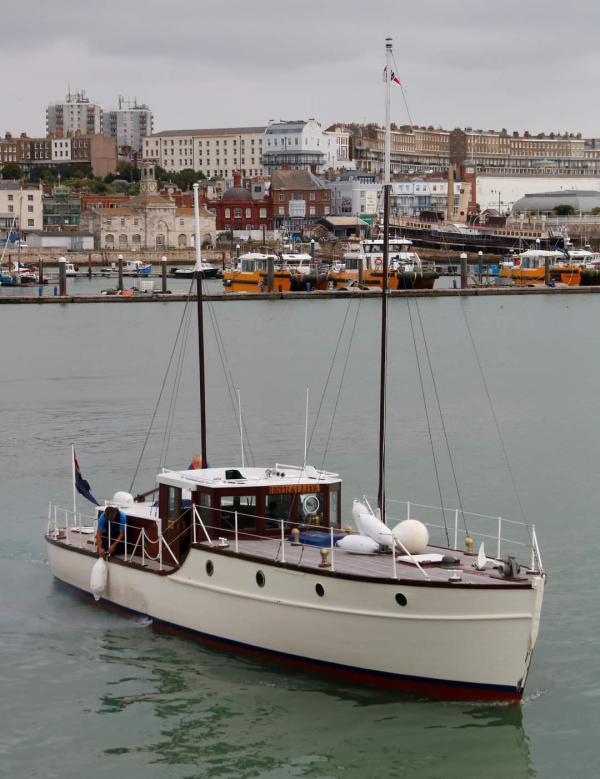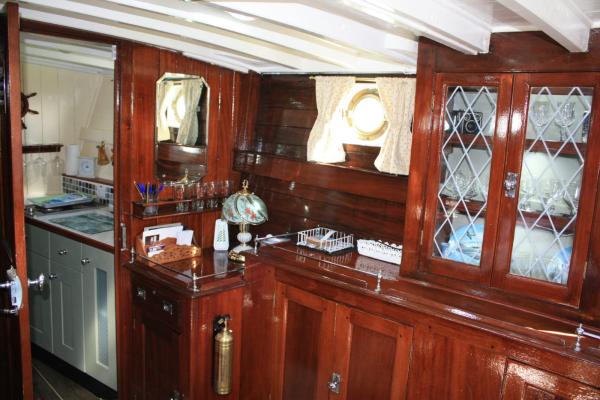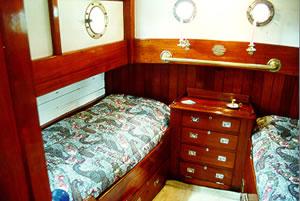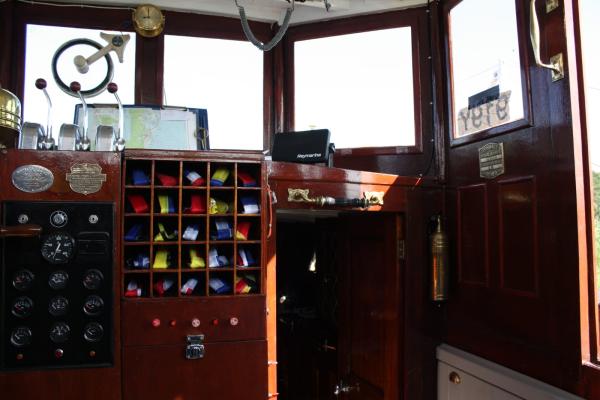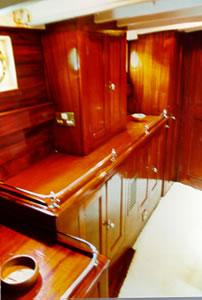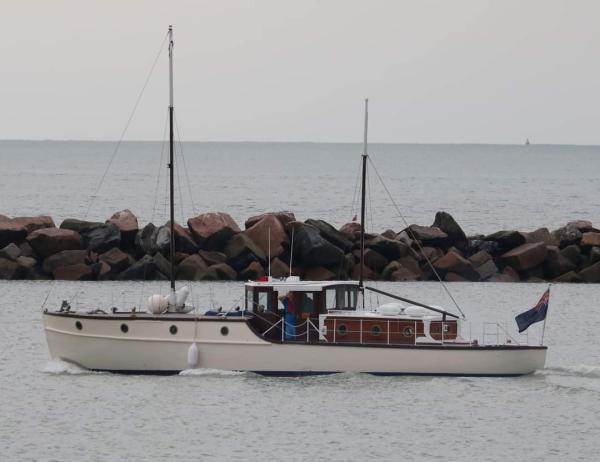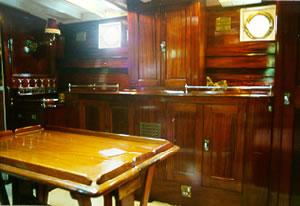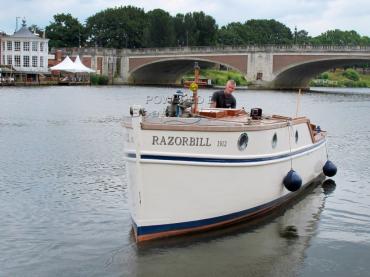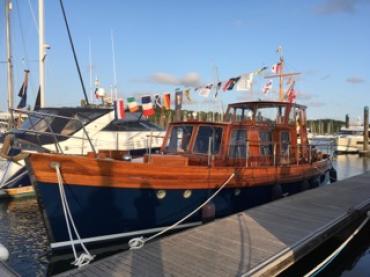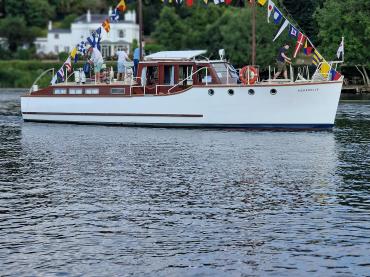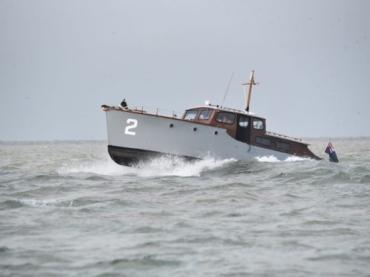

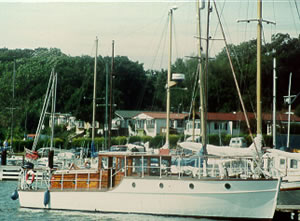
Previous names
- 2016 Rake's Retreat
- 1934 - 1949 Estrellita
- 1949 Little Star
- 2016 Estrallita (with an A not an E)
Details
Construction
Dimensions
History
ESTRALLITA is a gentleman’s yacht with an official number 163450 registered in the Port of London. She was built by John I Thornycroft at Hampton-on-Thames in 1934 with a yard number of 2280. She was launched as a 40ft vessel but was lengthened in 1935 by a canoe stern extending her to 48ft overall. Originally named ESTRELLITA (with an E) she retained this name from launch in 1934 to 1949 when her name changed to LITTLE STAR. The vessel is carvel built of pitch pine on steamed oak frames fastened with copper nails. She has a pointed bow with plumb curved stem and a canoe stern. She is ketch rigged with Bermudan sails on her two timber masts.
Admiralty records show that with effect from 1st June 1940 her then owner Lewis Clayton was paid £12.10s per month for the duration. In 1940 she was deployed as a Harbour Patrol vessel. During the recent restoration by her current owner the re-enforced base plate for the focsle mounted Vickers Machine Gun was discovered and the original Admiralty Issue Binnacle “Old Faithful” was also discovered and been reinstated.
At some point in the 1950s the vessel was renamed RAKES RETREAT. From 1959 to 1964 she was owned by TV personality Hughie Green, who lived on board at Teddington while filming Opportunity Knocks at Thames Television Studio.
Under new ownership in 2016, the vessel was renamed ESTRALLITA (with an A), and underwent an extensive renovation back to her original design. She was fitted with 45hp four cylinder Perkins 4107 Diesel Engines quarter mounted105hp Perkins 6354 Diesel Engine centreline.
Update, February 2023: Vessel believed sold.
Significance
1. What is the vessel’s ability to demonstrate history in her physical fabric? Evidence for designs, functions, techniques, processes, styles, customs and habits or uses and associations in relation to events and people. How early, intact or rare these features are may impact on significance.
ESTRALLITA is a 1930’s ‘gentleman’s yacht’, originally built at 42ft long with a flat stern, and a pointed bow with plumb curved stem. She is ketch rigged with Bermudan sails on her two timber masts. After her delivery and maiden trip, a canoe stern was added to improve her sea worthiness which added 6ft to her overall length and a reinforced iron keel. She was originally fitted with a Petrol 30hp Thornycroft engine fitted with 2.1 reduction gear giving her a speed of 9 knots, and a sail area of 240sq ft is provided on two timber masts ketch rigged with Bermudan sails as an auxiliary to the machinery installation. A 2-cylinder Diesel wing engine was installed in 1936 as a back-up for sea voyages. She is carvel built of pitch pine on steamed oak frames fastened with copper nails.
ESTRALLITA retains over 87% original materials including hull fabric and a number of fixtures and fittings. The master saloon retains the original mahogany finish, cocktail cabinet, and soft furnishings, as well as a small container used to store red tip matches to light the bunk candles. A wash basin was reinstalled to return the cabin to its original design. Other original features include door and drawer handles, brass vents, the Aft Bosuns locker and Steering Gear compartment with wire pulley. Her overall layout has largely been retained as built. In 1980 her helm roof was modified to enable greater access for the removal and maintenance of the engines and the Teak decking was replaced using like for like materials, and eventually replaced with modern caulking materials in 2020.
During conservation works completed between 2015-2021 the roof of the Rear Master Cabin and the Port side helm access door were sympathetically replaced to their original 1934 design. Three planks above the waterline on the hull were also replaced where rot had set in. Finally, a section of the bow centre line was replaced where some severe underwater damage had occurred. Works were completed using like for like materials to maintain the original aesthetic look and integrity. New fuel tanks were fitted and the engine instrumentation was upgraded to meet current safety standards. During works, a support pad was uncovered that would support a Vickers machine gun, and ESTRALLITA was also issued with an Admiralty Binnacle. Iron ingots had also been placed as ballast under the Master Saloon and galley. Adaptations have been made to meet current safety standards. This includes the removal of the latona heater and Para Fin stove, and the installation of modern fire extinguishers, though two Romec fire extinguishers have been re-instated for posterity.
2. What are the vessel’s associational links for which there is no physical evidence?
Associations with people or places. Off-ship research.
ESTRALLITA was built and designed in 1934 by John I Thornycroft at Hampton on Thames and is a surviving example of a classic motor yacht design using traditional shipwright skills. She has a significant connection to Poole and is nationally significant as a vessel requisitioned by the Ministry of Transport in Poole in 1940 to serve during World War Two. Fabric evidence and admiralty records reflect her role as a harbour patrol vessel - one of six craft deployed to block the channels in an invasion. A possible involvement in Operation Dynamo has yet to be definitively proven.
ESTRALLITA was then sold to the Bonham-Christie family, who owned Brownsea Island in Poole Harbour. During the 1950’s her name changed to LITTLE STAR and RAKES RETREAT, and from 1960 she was owned by TV personality Hughie Green who used her for accommodation while in the London TV studios. In 1963, ESTRALLITA took part the rescue of yacht SILVER CREST and her two-man crew off the coast of Cornwall. She continued her connection with the South West up to 2000s, with several owners including the award-winning author Felicity A Bridges. In 2015, she was purchased by Anthony Billson and underwent extensive conservation works in line with her original design, culminating in a successful voyage from Lowestoft to Ramsgate.
ESTRALLITA has featured in a number of articles including in 1934 when she featured in Motorboat magazine which highlighted her being the first vessel to go to sea with a built-in ‘car’ radio, a Latona heater and Para Fin stove. Her conservation was also featured in Britain at War Magazine and in 2021, she took part in a number events commemorating the Operation Dynamo evacuations and Victory in Europe.
She was listed on the National Register of Historic Vessels in 2000.
3. How does the vessel’s shape or form combine and contribute to her function?
Overall aesthetic impact of the vessel, her lines, material she was built from and her setting. Does she remain in her working environment?
ESTRALLITA is a purpose built gentleman’s yacht, designed for leisure and entertainment. She is aesthetically pleasing with elegant lines and high quality materials of Teak, Oak and Mahogany that have been retained as built. Her canoe stern and reinforced iron keel improved her sea worthiness. During her life, adaptations have been made to improve comfort and incorporate modern equipment including expanding the gally for a 2-burner electric hob and the installation of a dual electric refrigerator.
ESTRALLITA is berthed in the Marina at Sommer Leyton Norfolk where the bulk of her conservation was completed, and operates mainly on the Norfolk Broads with plans to undertake fundraising tours.
Sources:
National Archives
These files were used to research the information gained.
ADM 1/11144 - ADM 199/7888 - ADM 199/790 - ADM 199/787 - ADM 199/786
ADM 199/793 - ADM 199/788A - ADM 199/794 - ADM 199/792 - ADM 199/791
ADM 199/789
MT 40/36 and MT 40/66 – List of vessels and reports from Masters
WO 361/21
Mt 19/94
ADM 199/179 – ADM 217 – ADM 210 Green List Home Waters
ADM 223/79 to /83 Officer Commanding Daily reports
ADM 177 Officers Lists
ADM 199/94 Flag Officer in Charge Portland War Diaries ref 7340
Dorset Historical Centre Dorset
DC PL/1/5/5/3
National Museum Royal Navy
Poole History Centre
Poole and WW2 by Derek Beamish, Harold Bennet and John Hillier
Dorset’s War Diary by Robert Legg
Poole Maritime Trust
Poole Harbour Commissioners Day Book March 1937 to June 1942
East Dorset Herald – June 1940
Author:
Michael F Hawkins BEM.
NHS-UK Team
Key dates
-
1934
Built by John I Thornycroft at Hampton-on-Thames with a yard number of 2280.
-
1940
Commissioned by the Royal Navy
-
1949
Re-named Little Star.
-
2016
Restored by present owner and renamed ESTRALLITA (with an A not an E).
Own this vessel?
If you are the owner of this vessel and would like to provide more details or updated information, please contact info@nationalhistoricships.org.uk

